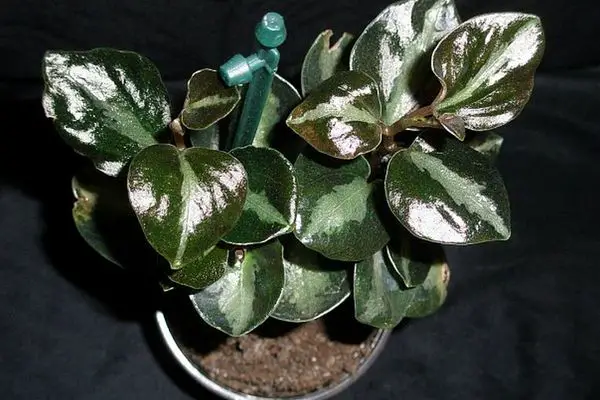Peperomia belongs to the Pepper family. The homeland of the plant is the warm tropical forests of the American continent. Modern botany knows about 1000 subspecies of peperomia.
Some of them are adapted for cultivation at home. Unpretentiousness, attractive appearance contributed to the popularization of culture among plant breeders.
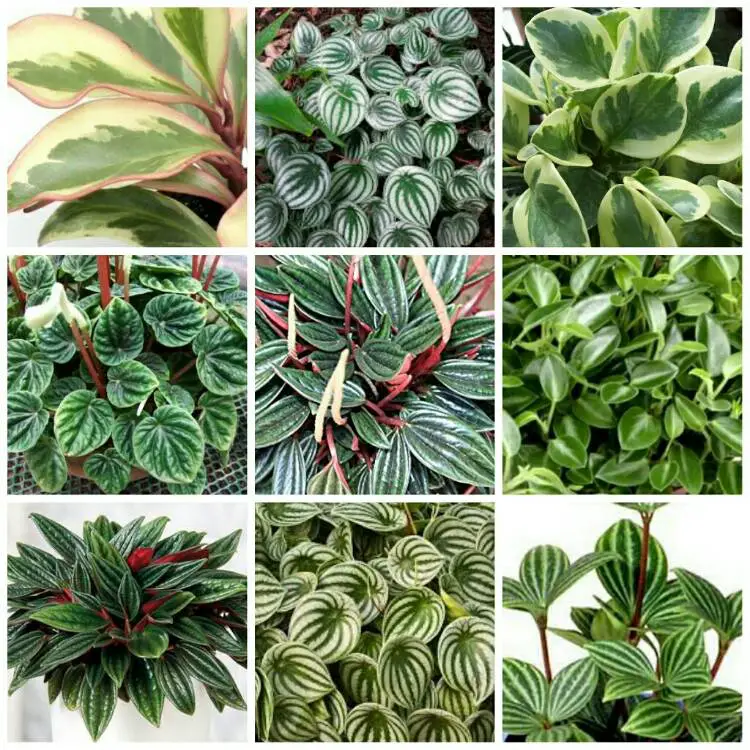
Peperomia Description
These are small bushes, perennial, annual herbaceous plants. Flower stems are dense, fleshy, leaves can vary in size depending on varietal characteristics.
The culture is blooming, but the main decorative function is performed by the leaves. Corollas of peperomia are small, inconspicuous. When optimal conditions are created, the plant can be used to decorate street flower beds.
27 peperomia varieties and types
There are a large number of plants, united under the general name “peperomia”, but the differences between them are significant.
Climbing peperomia
The most popular variety for indoor maintenance has an interesting feature young leaves are painted in a light green shade.
As it grows, the color changes to gray, and the shape of the foliage becomes oblong. The plant is unpretentious, it feels great on street beds in the warm season.
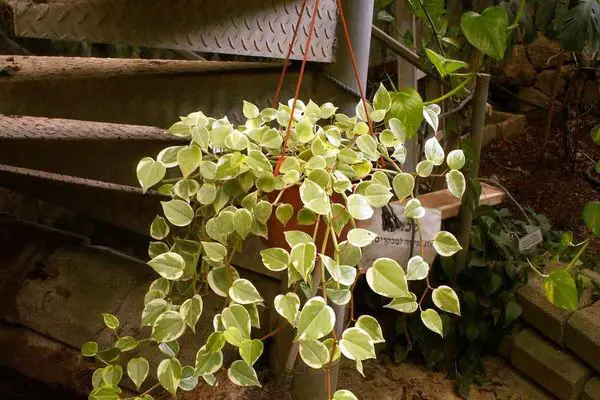
Bush peperomias
The peculiarity of this group of plants is their miniature size. Bushy peperomias are small in height – only up to 15 cm.
Shriveled, or caprata peperomia
The compact plant is distinguished by large wrinkled leaves, the waves on which are separated by veins. The shade of the foliage is burgundy, the stems are short, so it seems that the pot is simply densely covered with scarlet leaves.
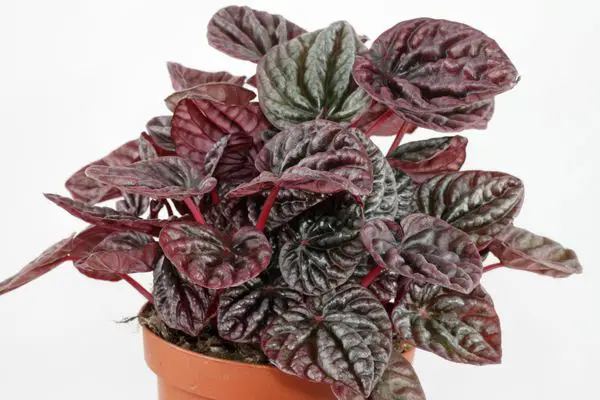
Caperata Rosso peperomia
The variety is distinguished by large oblong leaves. Their feature is the shade: the top of the foliage is painted green, the bottom has a burgundy color.
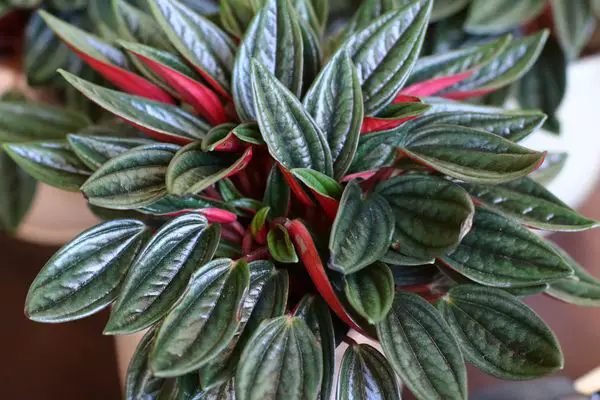
Caper Lillian peperomia (Peperomia Caperata)
Peperomia Caperata Leaves are cordate, wrinkled, rich dark green color, with a glossy surface. They are located close to each other, almost completely cover the stems.

Peduncles grow up to 20 cm, each of them has one greenish bell-shaped flower.
Peperomia obtusifolia
Peperomia obtusifolia Perennial with small fleshy leaves up to 9 cm long, 6 cm wide. Feature of the variety: in natural conditions, peperomia can grow not only on the ground, but also cling to tree trunks.

Magnolia peperomia (Peperomia Magnoliifolia)
Peperomia Magnoliifolia flower has large leaves up to 15 cm long. The main shade is green with a bluish tint. The fleshy stems may be reddish. The maximum height of magnolia-leaved peperomia is 35 cm.
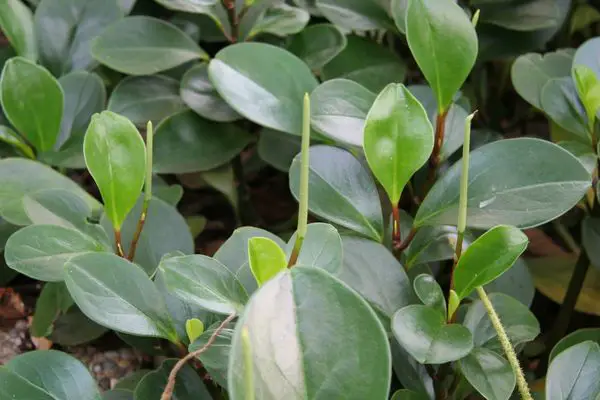
Clusielist peperomia
Peperomia has a decorative appearance due to its short leafy stems, which give the impression of a thick, lush “cap” of foliage. The main shade is green, the leaves are framed with a reddish border.
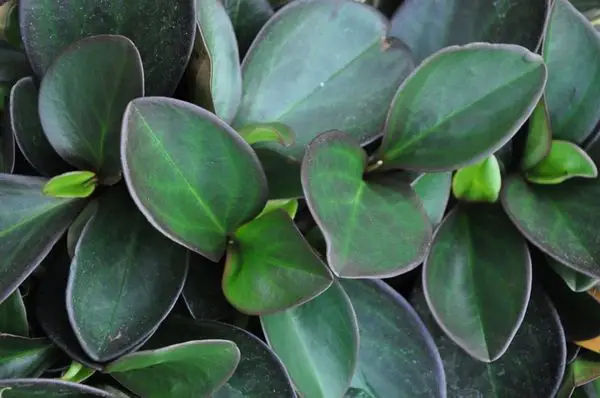
Silvery peperomia
The subspecies is similar to wrinkled peperomia, however, in contrast to it, it has a bluish color of foliage. The variety is characterized by short stems and rosette leaves.
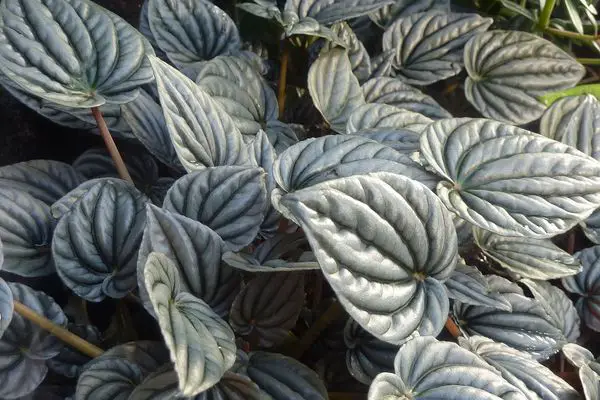
Silver peperomia can be classified as a dwarf species, since its height is only 20 cm.
Watermelon peperomia
The subspecies got its name due to the striking similarity of the color of the leaves with the watermelon rind. The height of the watermelon peperomia is about 15 cm; in its natural habitat, the plant spreads along the soil. The leaves are ovoid with pointed ends, the stems are reddish.
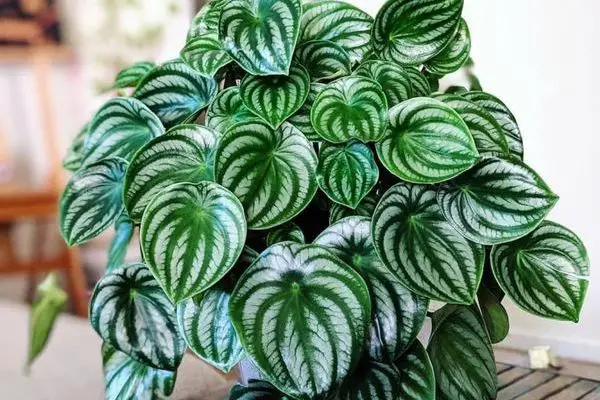
Graveolens peperomia
Unlike most subspecies of peperomia, graveolens has oblong, narrow fleshy leaves. The outer side of the leaf is colored light green, the inner one has a rich scarlet color.

Peperomia blooms with small but showy yellow spikelets.
Peperomia Ferreyrae
Peperomia Ferreyrae peculiarity of the narrow long leaves of this subspecies of the plant is the ability to accumulate moisture. In nature, Ferreira’s peperomia often chooses tree trunks and large stems of other herbaceous plants as a support.
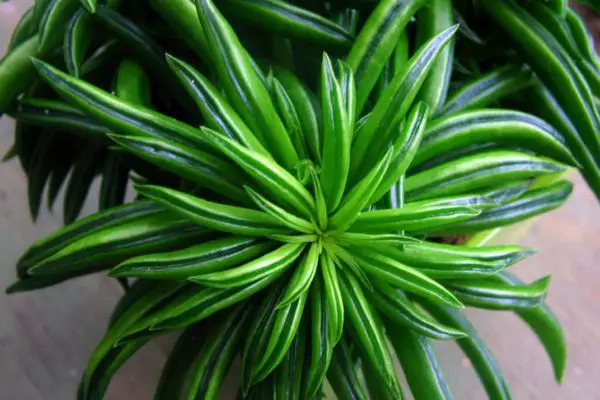
In a pot, the plant also needs additional support.
Ferreira Happy Bean peperomia
The name of the plant has a direct reference to beans (Happy Bean literally “happy bean”) due to the unusual shape of the leaves, resembling pods.

An exotic plant can be classified as a succulent due to its ability to accumulate water in foliage. The height of the peperomia does not exceed 20 cm, while the crown diameter can also be 15–20 cm.
Colombian
The stems of the plant are thick, short, topped with lanceolate green leaves. The peculiarity of the variety is a silvery metallic shade on the inside of the foliage.
During flowering, peperomia produces a large number of thin peduncles with small nondescript corollas.
Chisel peperomia
The leaves of this variety may appear to be folded in half. Peperomia has a light green tint, giving way to brownish on the stems.
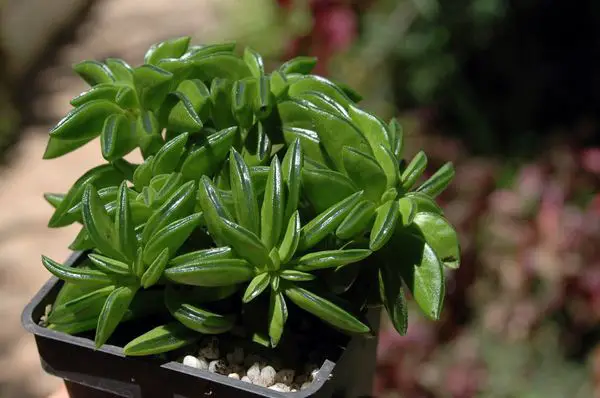
Peperomias ampelous
This group of plants is distinguished by long, thin stems. The most impressive ampelous peperomias look in pots, from where shoots strewn with small leaves hang down.
Headed peperomia
The culture can grow independently or act as an epiphyte, choosing the trunks of nearby trees as a support.
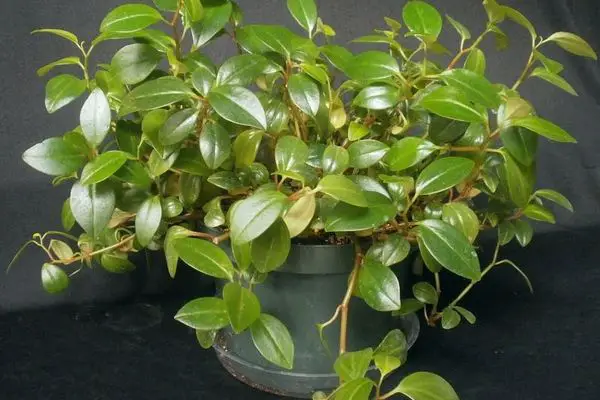
Stems are long, well branched, leaves are closely spaced, rounded, small in size. The shade can range from solid green to variegated with light edges.
see also Variegated Peperomia.
Round-leaved peperomia
Peperomia shoots are long, brown. The leaves are round, close to each other, the petioles are short. In nature, the plant acts exclusively as an epiphyte.
The Angolan peperomia
An evergreen plant characterized by oblong striped leaves with pronounced light veins. The inflorescences are collected in spikelets resembling plantain flowers.
Reddish
The branchy shoots are purple in color, with a small amount of short hairs that give the plant a fluffy appearance. The leaves are small, oval, their lower part is colored reddish.
Peperomia Clusiifolia Red Edge.
Marble peperomia
The variety forms a squat shrub with thick shoots, fleshy leaves. The color is green with light brown streaks. Leaves are cordate, large.
Spotted peperomia
The perennial is distinguished by a large number of brown spots on the stems, for which it received such a name. The leaves are large, green, with pronounced light veins.
Gray-haired peperomia
The plant is considered tall among its relatives – the length of the shoots reaches 50 cm.Under the weight of the leaves, the stems begin to sag, which looks quite impressive. The color is green with a bluish bloom.
Erect
The peperomia group unites tall perennials with thick dense stems.
Velvety
The reddish trunk of the herbaceous perennial is covered with many short soft hairs. The leaves are large, green, alternate, with white veins, their reverse side is also fluffy.
Peperomia pereskiifolia
The leaves of this subspecies are tough, small in size, with a rich green hue. The accumulation of foliage is noted on top of the shoots, the lower ones die off as the stem grows.
Creeping peperomia
The creeping subspecies have small leaves on a long, flexible trunk. The most comfortable creeping peperomia feels in tandem with erect plants.
When coexisting in one pot, the peperomia stems will have the opportunity to cling to the trunks of other perennials, creating bizarre compositions.
peperomia plant indoor care
The plant is considered unpretentious, however, the maximum decorative appearance of a perennial can be achieved by creating comfortable conditions.
How to buy peperomia correctly?
When choosing a plant in a store, you should rely on its appearance. A healthy perennial should not have visible flaws, yellowed foliage. A plant with elastic stems, make sure that the leaves are not lethargic, wrinkled, dehydrated.
Important! You should refrain from acquiring peperomia with traces of the vital activity of insect pests – even if such a plant can be cured, there is a high probability of contamination of other flowers in the room.
When choosing a variety of peperomia, one should start not only from the decorative features of a particular variety but also from its size. Large plants require more space, so they are not suitable for small apartments.
The benefits of perennials for the home are obvious purification, filtration of air, a saturation of it with oxygen. It is noticed that in a house where there are many indoor plants, it is much easier to breathe.
peperomia Bloom
How does peperomia bloom? The formation of peduncles in most varieties falls in the summer. Peduncles are often in the form of dense spikelets with small yellowish buds.
Even the blossoming corollas of most varieties are rather inconspicuous, therefore, they are not of particular interest to plant breeders.
peperomia Temperature regime
Peperomia to feel as comfortable as possible, it should adhere to the air temperature of about + 20 … 25 ° C . As such, the perennial does not have a dormant period, so in winter the same temperature indicators should be maintained.
Important! A decrease in temperature to +15 ° C and less can adversely affect peperomia.
peperomia Hygiene
Subspecies with pubescence on leaves and stems do not need hygiene. Some varieties with smooth, glossy leaves require regular surface dusting with a damp soft cloth.
peperomia Spraying
Perennial prefers moderate indoor humidity. It is recommended to spray the foliage in the autumn-winter period: due to the operation of central heating batteries, the air quickly loses moisture.
Instead of classic irrigation with water from a spray bottle, you can maintain the humidity in the room with a household humidifier.
peperomia Lighting
The herbaceous perennial prefers well-lit windowsills but reacts negatively to direct sunlight. Variegated, variegated varieties with a lack of light can lose their peculiarity.
Therefore, if the natural daylight hours are short, you should additionally illuminate the peperomia with fluorescent lamps.
Attention! Subspecies with green leaves grow normally in partial shade, however, in some, elongation of the stems may be noted.
peperomia Watering
Moistening the soil should be regular. It is important that the upper part of the earthen coma dries well after the previous watering, otherwise root rot is possible.
For humidification, settled water at room temperature is used. The frequency in the summer period is 1 time in 8-10 days, in winter it is reduced to 1 time in 14 days.
peperomia Pot
The size of the capacity should correspond to the size of the root system. In a too spacious flowerpot, peperomia will begin to grow roots, while the green mass will cease to increase in volume. The material of the pot does not matter: the pot can be made of glass, ceramics, plastic.
Advice! The only requirement for the pot is drainage holes in the bottom to drain excess moisture.
peperomia soil mix
Perennial prefers nutritious, loose, neutral soils. When cultivated at home, a universal soil for flowers with a high peat content is suitable.
peperomia fertilizer
To replenish the nutrients in the soil, complex liquid fertilizers rich in potassium and nitrogen are used.
The optimal frequency of top dressing is once a month from April to October. In winter, the plant does not need a lot of nutrients.
peperomia Transfer
Replacing the old container with a larger one is carried out once a year for young plants, once every 3 years for adult specimens.
The transplant is carried out by the method of transshipment of an earthen coma . It is important not to peel off the old soil from the rhizome, so as not to accidentally damage it.
peperomia Pruning
To get a branchy, lush plant, you should pinch the tips of the young stems. The procedure is carried out in the spring, from March to May.
Advice! To maintain the decorative appearance of the plant, old yellowed leaves must be removed in a timely manner.
Is it possible to leave peperomia without watering for the duration of the vacation?
Peperomia easily tolerates a lack of watering for 14 days. If you are planning a long trip, then you should provide the plant with moisture by placing it in a basin of water: the flower will take the right amount of moisture through the drainage hole.
Do not forget about wick watering, when a cloth strip is dropped from a container with water to the pot, moisturizing the soil. An important condition for such a design: the container with water must be above the flowerpot.
peperomia propagation methods
There are several main ways to increase the population of peperomia.
by Cuttings
The shoot is carefully separated from the mother plant, placed in water until the roots appear. When the roots grow to a length of about 2–3 cm, the cutting is ready for transplantation.
You can understand that the plant is rooted in the new leaves that will appear on the stem.
by Leafy cuttings
For this method, you need to separate the leaf along with the handle from the trunk. Before planting it in the ground, wait for the roots to appear in the water, as during grafting, or sprinkle the cut site with Kornevin, immediately placing the leaf in the ground.
Attention! This method is suitable for varieties with long leaf stalks.
by Seeds
This method is the most difficult, however, it allows you to fully preserve the varietal characteristics of peperomia. Seeds can be harvested on their own, waiting for the pet to bloom, or purchased at the store.
The method is complicated by the extremely small size of the planting material, which is why it is necessary to sow rather densely, thinning the seedlings after the leaves appear.
By dividing the bush
Used when transplanting. To do this, you need to carefully remove the peperomia from the pot, divide the mother bush with a sharp knife, then transplant the resulting plants into different containers.
peperomia Diseases and pests
Often, a perennial gets sick if the conditions in the apartment do not suit him. The grower is faced with the following problems:
- If the air is too dry , peperonia sheds its leaves.
- From excessive watering , especially if the flowerpot does not have drainage holes, rotting of the root system is inevitable.
- Blanching of the color of the leaves in low light.
- Burns from standing under the hot rays of the sun.
- The appearance of rusty spots when affected by infectious diseases.
Peperomia can be attacked by pests:
- The mealybug causes the plant to lag behind in development. You can fight the insect by spraying the flower with soapy water or using Actellik.
- Nematodes affect the root system, as a result of which the plant begins to rot, die off. Unfortunately, it will not be possible to save a perennial infected with parasites, however, it is necessary to discard it in a timely manner, before the helminths migrate to other indoor flowers.
- An ultraviolet lamp effectively fights against spider mites . Radiation sessions are carried out daily for 2 minutes.
- If thrips are found , the flower should be treated with a decoction of cyclamen roots or sulfur powder dissolved in water.
- It is possible to destroy the shield by spraying with an alcohol solution, the use of vodka, alcoholic infusions is allowed. The drug “Fitoverm” is effective.
The easiest way to combat pests is at the initial stage of the defeat, until they have time to multiply. For timely detection of insects, periodically inspect indoor flowers.
Any change in appearance, the appearance of spots indicates pest damage or improper care that requires correction.
